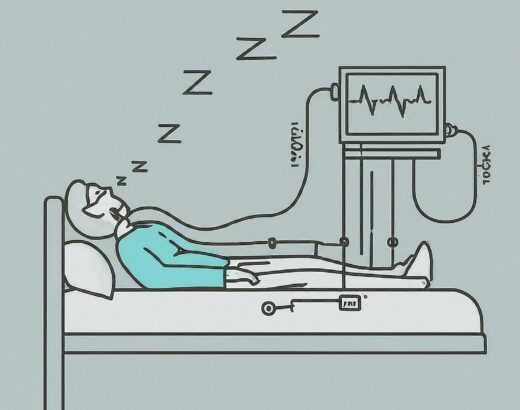Indian to Pacific Ocean by Road – Part II :Perth to Boondi Rocks
This is Part II of our expedition report – the road trip from Perth in WA across the Nullabor and reaching the shores of Sydney with detours to Adelaide, Melbourne and Canberra along the way. The trip video, once fully edited will be shared by K2TV vide its YouTube site.
It took less than an hour to get to Meckering, a town not far from Perth. We had been here before, during our trip to the Goldfields-Esperance region. The trip from Perth to Meckering was not a difficult one, though the traffic was not light. It was time to have a nature break and we pulled the Explorer off the road into a shade.
The saying goes that “people can tell you where they were when Kennedy was assassinated, when Armstrong landed on the moon and when Meckering had its earthquake”. It is a way of emphasising how extensive the Meckering earthquake was, touching 6.9 on the Ritcher’s scale. The day was 14th October 1968 and it was 10:59am when all changed for Meckering. The earthquake was so intense that it shattered windows as far away as Perth, 130 kms away. A fault line was created as a result of the quake. It is almost 5 decades after and the fault line has been filled and built up in a number of areas but one can still get to see a little section of this in the town. A road sign further down the road provides directions on how to get to see the fault line.
 An open shed, on the right of the road as you travel eastward towards Karlgolie, is dedicated to telling the story of the earthquake. A section of the C.Y O’Connor’s pipeline is exhibited here and is said to have been removed from its original location and tossed some distance away. One can see the crack in the thick steel that the pipeline section was made of. The write-up on the wall also mentioned severe damage to the railway tracks linking Perth to Karlgolie. Visitors are encouraged to visit the town to see a preserved area where the fault has not been built up since the earthquake occurred.
An open shed, on the right of the road as you travel eastward towards Karlgolie, is dedicated to telling the story of the earthquake. A section of the C.Y O’Connor’s pipeline is exhibited here and is said to have been removed from its original location and tossed some distance away. One can see the crack in the thick steel that the pipeline section was made of. The write-up on the wall also mentioned severe damage to the railway tracks linking Perth to Karlgolie. Visitors are encouraged to visit the town to see a preserved area where the fault has not been built up since the earthquake occurred.
A house, resembling a modern camera, stands a little further away from the open shed. It is the Big SLR Camera Museum, dedicated to the history of the Camera. Camera devices are so popular and affordable these days that many had forgotten that life had not always been like this. As I write this piece, the developers of the digital camera were being awarded the £1m Queen Elizabeth Prize, the highest award for engineering feats. This museum helps to fill the knowledge gap on how we transition from the age of the pin-hole to the digital cameras. Apart from the unique design of the building, there was nothing inviting on the outside. In reality, the outside presents itself as a derelict of a filling station that had been pulled out but the environment was not fully restored. Gothic in appearance and can do with a good make-over. We had also visited this museum previously and had taken pictures there and were not of any interest to do this again.
As we return to the Explorer, we met a mother and her two daughters heading towards us sipping cold drinks from paper cups they were holding. It was hot, really hot. It seemed as if the Sun was angry with the Earth and decided to scorch her to death! We exchanged pleasantries and talked about the heat. They were heading towards Perth. I drove the Explorer across the road and it was time to satisfy the thirsty beast.
The Great Eastern Highway connects Perth to the gold town of Karlgolie-Boulder. It is a well trafficked road and aptly called the Road Train route for a reason. The road trains were many. They serve as the vital artery that sustains commerce in Perth as a result of its remoteness. The Merredin Tourist Bureau has a signage erected on the highway to show that it holds the World Record having successfully gotten a 610.7m long road train with 45 trailers travel a distance of 8.67kms on 3rd April 1999. There is no reason to doubt this record, we left the site with an agreement that if the record truly exists, we don’t know of anywhere else in the world that would have been more suitable for this.
We soon came across the Rabbit Proof Fence. At, 3,253 km (2,021 mi). It is said to be the longest fence in the world though evidence exists that the Dingo Fence of South-East Australia is actually longer. The Rabbit Proof Fence, at the time it was completed in 1907 was a demonstration of ingenious solutions to problems encountered by the Australian farmers. Unlike the Berlin Wall, erected to keep people out, the Western Australia Rabbit Fence was erected to keep rabbits out of farmlands.
The Rabbits came on the First Fleet, along with the convicts. Then they became a problem as they are extremely prolific creatures and
spread rapidly across the southern parts of the country. The conditions in Australia were ideal for a rabbit population explosion and farm losses from rabbit damage grew. Western Australia’s response, to contain this damage, was to construct the Rabbit Proof Fence. It is now known as the State Barrier Fence, regularly maintained.
I left the rabbit proof fence site with a lesson – history can be unfair. Thomas Austin, whomever he was, must have received accolades in 1859 when he released 24 wild rabbits for hunting purposes. In so doing, he has, much later, became the brunt of blame for introducing this pest to Australia.
As we proceeded on our journey towards Coolgardie, we drove past the town of Cunderdin, the site of one of the No. 3 Steam Pumping Station for the goldfields water supply scheme built in 1901-1902. The town has a weird building, standing next to the highway. It is the replica of Ettamogah Pub, originally devised by cartoonist Ken Maynard and featured from 1959 in the Australasian Post magazine.
By the time we approached Coolgardie, it was getting late for continued safe driving. We chose the Goldfields National Park as a resting place and met not less than eight other groups camping there. We picked a nice spot and parked the Explorer. It was my job to set up the tent for the night, my very first real experience with camping in a tent. I struggled, but eventually got the tent up. The camping ground was lovely and we were surrounded by nature. A few meters in front of us was the Boondi Rock, a massive outcrop of igneous rock. To the left was a man-made dam, one that had stood the test of time. It was made to provide water for the locomotive steam engines of yesteryears. It was an ingenious solution – channelling the rain water into a huge reservoir. Water is scarce and difficult to come across in the goldfields. We had our meal and soon climbed into the tent for a deserved rest after the long day trip.
In the morning, the flies were already out. What a nuisance these were? They are also proud features of Western Australia and the Boondi Campground is no exception. We took a walk around the park, visited the dam and proceeded to the top of the Boondi rock. Weathering was silently at work, as it had been through the ages, helped by the continuous changes in temperatures from cold nights and morning to hot steaming afternoons. The top layers of the rock was flaking and cracking. We saw the skilful use of these rock pieces to create a water channel leading into the dam. The water in the dam and the vegetation it supports have attracted different species of coloured birds to the area. Chirping and darting around the shrubs, they add some vibrancy to life in this area. Salmon gum trees were all around the park and the occasional sounds of the road trains passing on the nearby highway is the only noise that pierce this serene atmosphere.
A couple were camping directly next to the dam and they volunteered to be interviewed. We completed the interview and exchanged pleasantries. The man is an Australian Nurse and stays in Kalgoorlie while the lady, a French national was on her way back to Perth, the city we had just left. We went back to our tent and I started the process of pulling it down and folding it up. My wife took the time to prepare a meal for us and we were soon on our way.
—-Continued in Part III—-











